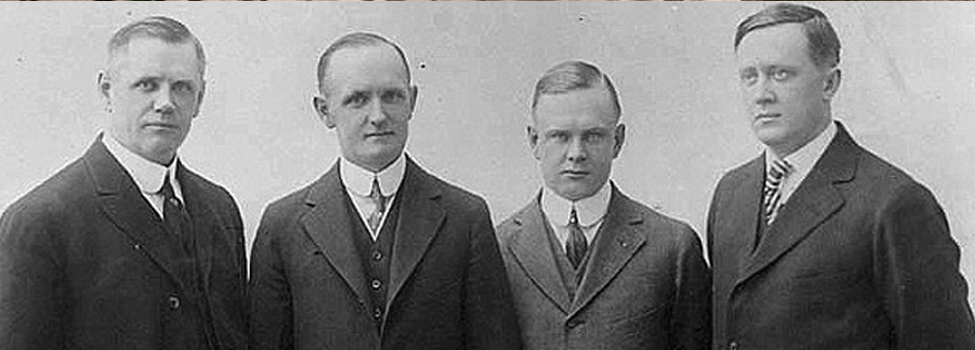Sandy and Margaret Davidson settled in Milwaukee where Sandy found work for himself as a carpenter in a local railroad company. The industry was flourishing and business was booming as the rail networks expanded into apparently limitless new territories.
Their surviving three sons and two daughters also adjusted well to their new lives, and each prospered in their own way. His middle son, William C. Davidson (1846-1923) was born in Scotland and grew up in Angus, but he became a man in America. He is pivotal to the story of the Davidson Legacy because he had the attributes of technical skill, an analytical mind and an aptitude for problem solving.
These qualities are often considered typically Scottish as a nation of inventors and innovators. More importantly, they are key to understanding the spirit of enterprise in America at the dawning of the twentieth century.
“William C”, as he is affectionately known, followed his father Sandy into the railroad industry as a cabinet-maker, but his fascination for all things mechanical strongly influenced family life in his household. His three sons, Arthur, Walter and William A. grew up not only riding bicycles, but building them, maintaining them and eventually re-imagining them.
The three brothers witnessed as very young men the first incarnations of the motorised world, and saw early versions of powered cycles. They thought they could do better and set about the task in their backyard. Later they recruited Arthur’s childhood friend Bill Harley and the legendary name was born. William C., an enthusiastic tinkerer, warmed to his sons’ enterprise and quickly noticed that the scope of their ambition would readily outgrow their surroundings.
So, William C. Davidson, a Scot and a naturalised American, set about building the very first Harley-Davidson® workshop, now famously known simply as The Shed. He didn’t know it then, but he had laid the foundations for an iconic, internationally recognised, motorcycle-engineering phenomenon.

